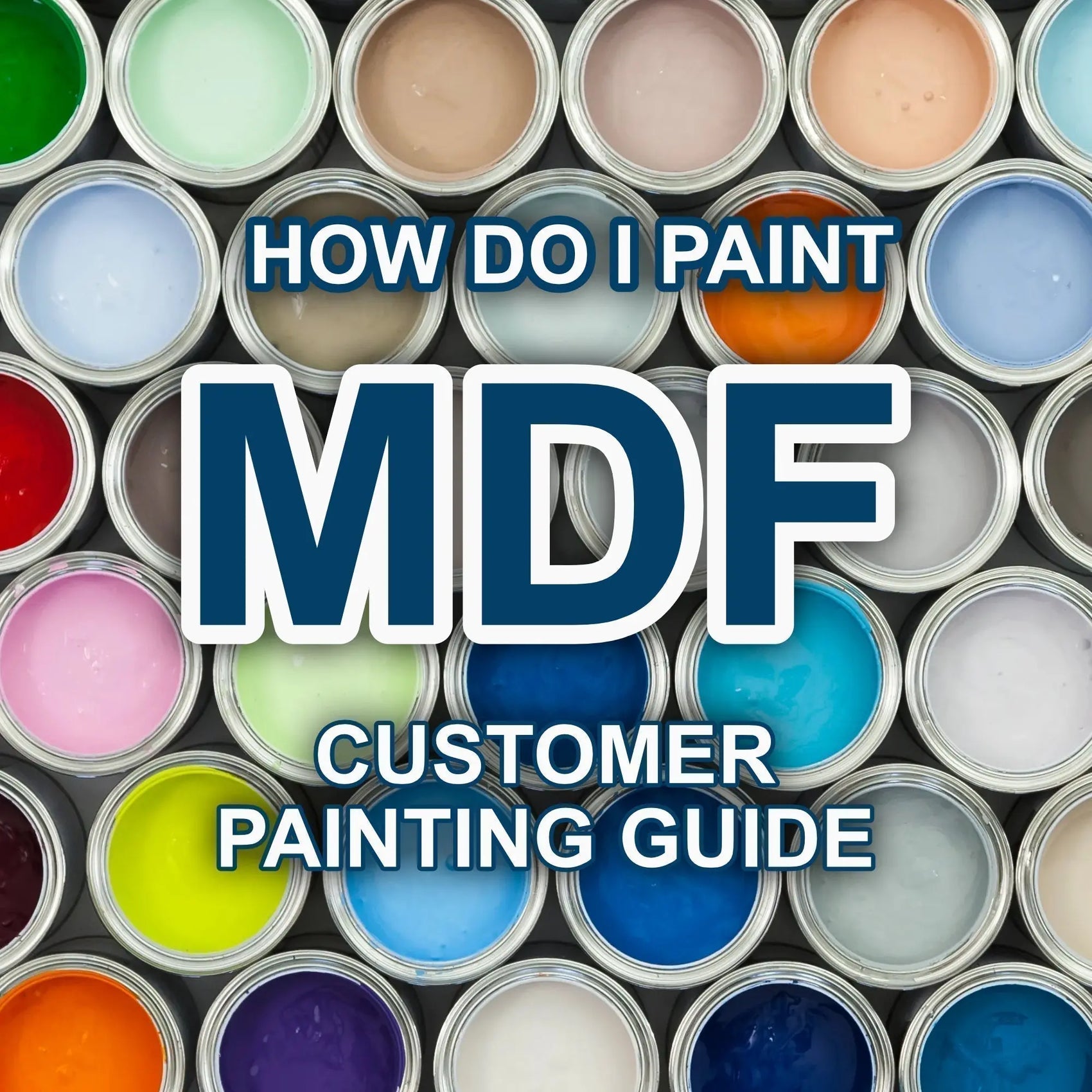Often we're asked for painting tips for our products, so we've created this guide to help answer some of your questions on how to paint MDF.
Painting MDF is very different than painting on wood, MDF has a smooth surface with very few imperfections, making it one of the easiest materials to paint, although it does come with its own problems. Thanks why we're always asked how to paint MDF, you can use various types of paints for MDF, such as diy store tester pots, acrylic paints and acrylic spray paints.
They can be applied directly onto the MDF, but for best results we would always recommend applying a sealer or primer.

Should I Prime or Seal MDF?
Due to the construction of MDF it is a very porous material, especially on the edges which have been cut. When paint is applied, it is absorbed into the material causing the fibres to raise and the material to feel a little furry. This can be addressed after the paint has dried by lightly sanding the painted surface, but not too much.
Once sanded you can then start applying your paint, you will notice that this layer won't soak up the paint as much and leaves a more desirable effect. Painting craft projects doesn't require the use of a sealer or primer, but it is highly recommended to create the optimal appearance.
When a sealer or primer for MDF is used like Rustins Quick Drying MDF Primer Sealer, it creates a barrier for your paint. When applying a light coat to the MDF, it will soak into the MDF quickly and be dry to the touch in 20 to 40 minutes.
Once fully dry, lightly sand to 200 or 240 grit sandpaper to remove any furry fibre bits that have risen on the material. Give it a second coat if necessary and leave for about 2 hours to thoroughly dry before repeating the sanding process. Finally clean all the dust off with a tack cloth or lightly damp cloth before applying paint.

Types of Paint to Use
DIY Store Tester Pots
These are cheap and cheerful and can go a long way, they're easy to find and very easy to clean up afterwards. However tester pots might not give the best overall finish and can leave build up at the edges.
Furniture Paint
These paints are usually much thicker, come in various colours and give a really nice finish. Unfortunately, these are usually a little more expensive but can cover really well without the use of a primer.
Acrylic Paints
These can be found nearly everywhere and are a very easy paint to use. With acrylic paint you may need to apply more than one coat to achieve a more opaque colour, but a little goes a long way with these paints. Acrylic paints are very easy to mix together to create yourself a unique colour pallet for your project.
Acrylic Spray Paints
These give a really smooth finish to the surface of MDF, and are best applied onto a primed or sealed surface. Use several light coats and allow to dry between coats to achieve a nice, smooth surface without runs and drips. They need to be used in a well-ventilated area or preferably outdoors.
How to Paint MDF
When painting your MDF project after its sealed or primed you will find that the colour applied gives a much smoother finish and dries quicker. You can use either a brush or roller to apply the paint to your design.
Using a brush or roller, apply the paint from the edges towards the centre of the material and allow to dry between coats.
This helps to stop a build up at the edges and creates a smoother surface. We find using a roller can leave a smoother surface than a brush, which can sometimes leave brush marks. Continue applying more coats, allowing the paint to dry completely between each coat.
The key is to apply several thinner coats and to build up your colours to create the desired effect/opacity. Once you have finished the base colours you may want to apply some finer details, you can use either a small detail thin brush or an acrylic paint marker to get into the etched areas of your project or to create fine details on your design.

Finishing
As a final step to protect your painted project, you could apply a light coat of spray varnish over the top, these are available in either Matt, Satin and Gloss finishes.
Ensure that you let each coat dry thoroughly before applying further coats otherwise your will experience crackling in the surface of the paint.
Warning
- The dust created when sanding MDF contains formaldehyde, you should do any sanding in a well-ventilated area and always wearing a mask.
- Don't let MDF get exposed to moisture or water as it will cause the MDF to swell ruining your project.

Final Notes
Painting on MDF craft projects can seem like a challenge at the beginning, but MDF is the most popular choice for craft projects due to its strength, affordability and resistance to warping allowing it to be made into various shapes and sizes. With a little patience and preparation, you will be able to achieve a professional finish to all your craft projects.
We hope you've enjoyed and found this guide to be useful.

